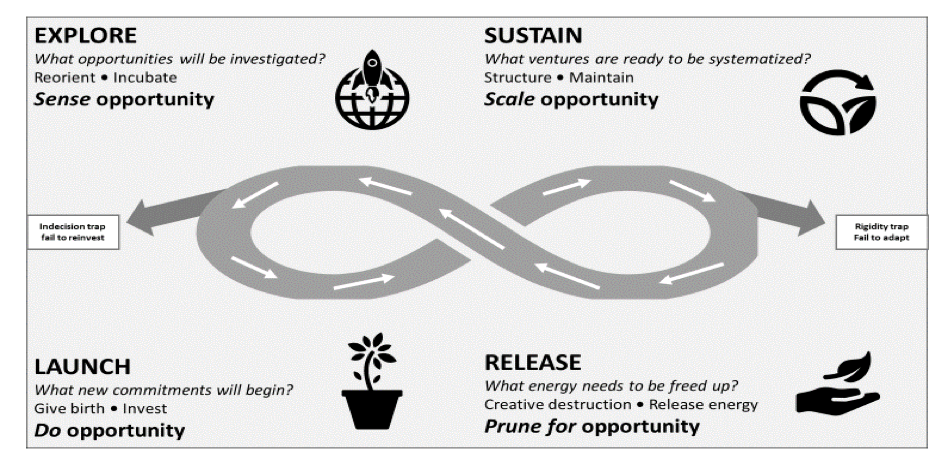
Water Finds a Way – and We Should Too
By Dr. Kathleen Allen

In May of this year I spent some time on the North Shore of Lake Superior in Minnesota. We had a wet spring in this part of the country and lots of late snowfall in higher elevations. As a result, the high volume of water coming off the mountains and into the lakes and streams were the most dynamic I’ve seen in the 29 years I have been visiting. As I drove along the primary road that connects small towns along the shore, there were spontaneous waterfalls cascading down the rock faces bordering the road. It occurred to me that my timing was good. If I had visited later in the season the waterfalls would have dried up and I would have missed this amazing example of Nature’s power – and its capacity to adapt seamlessly from one form to another.
The experience got me thinking more about water – particularly the way it moves through the landscape. It reminded me that water always finds a way to flow toward gravity. The forms it takes continue to change and adapt based on the changing geography and the volume of water that is flowing. Pulled by gravity, water changes its form many times as it moves from the melting snow on the mountain tops toward the sea level. On the North Shore it moves seamlessly from trickles to streams, to falls, to rapids, to eddies, to backwaters, to slow moving currents, to filling Lake Superior. In fact, there are profound lessons in how water finds a way to move from one form to another that both humans and organizations can learn from.
Organizational Lessons from Water
There are two primary lessons we can take from the way in which water moves and adapts to its surroundings:
- Within organizations the power of purpose is synonymous with the power of gravity in nature. Water is constantly drawn toward the lowest level or sea level. Gravity shapes its direction and its adaptive capacity. Our version of organizational “gravity” would be a higher shared purpose. In other words, the purpose of the organization should shape the direction and adaptation of the organization. Without this clarity of purpose in the forefront of our thinking, human organizations tend to hang on to old forms and processes that hold us back from continually adapting and innovating as our external environment changes. Once an overall purpose is recognized it helps an organization let go of forms that no longer serve the organization.
- Adaptive cycles flow seamlessly from one form to another in nature AND in organizations. Water doesn’t stop to figure out if it is going to drop down a cliff and form a waterfall. It just finds the most efficient and effective way to move towards its purpose – gravity and sea level. Nature would never hold endless leadership meetings to analyze the “right” course of action and neither should we. As organizations, we can move toward our purpose much more efficiently by losing our rigid attachment to existing forms and beliefs, and instead work to guide the organization to its next natural form.
More about the Adaptive Cycle
The Adaptive Cycle shown below demonstrates how nature and 3.8 billion years of history have continually adapted. Just like water, the cycle continues in an infinite loop between explore, launch, sustain, and release to create an ongoing seamless flow. Nature is always moving and releasing one form to explore how a new form can serve its purpose.

This concept is a powerful lesson for human organizations and our leaders. We get into trouble when we fail to launch or when we fail to release. We need to see change as a constant flow, rather than merely moving us from one place to another. Without the right adaptive mindset, organizations lose the capacity to innovate – and lose ground to organizations who seek to continually adapt.
Water always finds a way to move from its starting point toward sea level. It doesn’t have consciousness or emotional reactions to changing geography that cause it to stop its adaptive cycle. Instead it continuously releases one form to launch another as it moves toward its true purpose.
If we could lead our organizations like water – and use our adaptive capacity in an infinite, water-like way – we would tap into a powerful ability to innovate and seamlessly adapt to a more natural, more successful way of being.
 Dr. Kathleen E. Allen writes a blog on leadership and organizations that describes a new paradigm of leadership that is based on lessons from nature and living systems. She is the author of Leading from the Roots: Nature Inspired Leadership Lessons for Today’s World (2018) and President of Allen and Associates, a consulting firm that specializes in leadership, innovation, and organizational change. You can sign up for her blog on her website: www.kathleenallen.net
Dr. Kathleen E. Allen writes a blog on leadership and organizations that describes a new paradigm of leadership that is based on lessons from nature and living systems. She is the author of Leading from the Roots: Nature Inspired Leadership Lessons for Today’s World (2018) and President of Allen and Associates, a consulting firm that specializes in leadership, innovation, and organizational change. You can sign up for her blog on her website: www.kathleenallen.net

 supports Lideramos
supports Lideramos